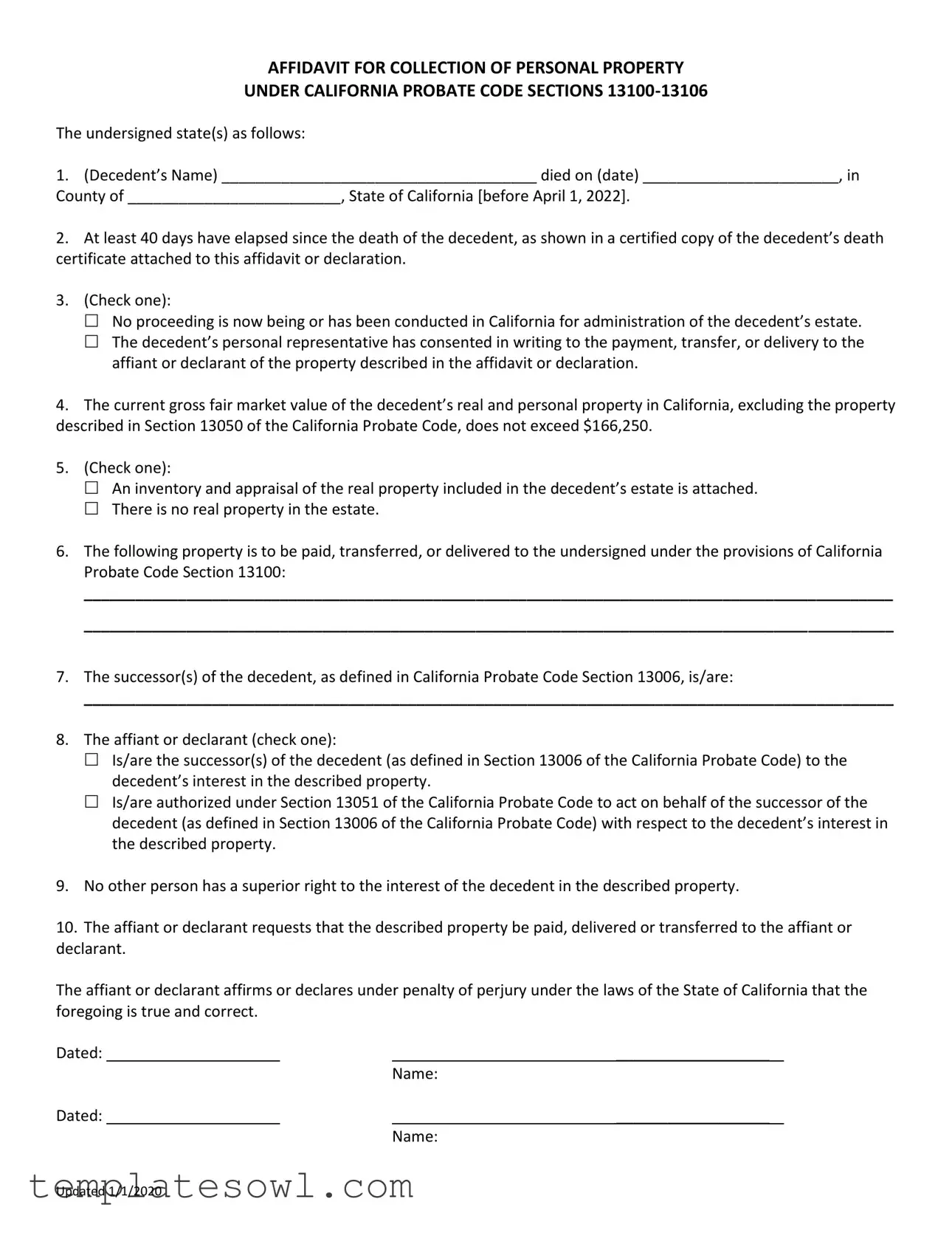AFFIDAVIT FOR COLLECTION OF PERSONAL PROPERTY
UNDER CALIFORNIA PROBATE CODE SECTIONS 13100-13106
The undersigned state(s) as follows:
1.(Decedent’s Name) _____________________________________ died on (date) _______________________, in County of _________________________, State of California [before April 1, 2022].
2.At least 40 days have elapsed since the death of the decedent, as shown in a certified copy of the decedent’s death certificate attached to this affidavit or declaration.
3.(Check one):
No proceeding is now being or has been conducted in California for administration of the decedent’s estate.
The decedent’s personal representative has consented in writing to the payment, transfer, or delivery to the affiant or declarant of the property described in the affidavit or declaration.
4.The current gross fair market value of the decedent’s real and personal property in California, excluding the property described in Section 13050 of the California Probate Code, does not exceed $166,250.
5.(Check one):
An inventory and appraisal of the real property included in the decedent’s estate is attached.
There is no real property in the estate.
6.The following property is to be paid, transferred, or delivered to the undersigned under the provisions of California Probate Code Section 13100:
_______________________________________________________________________________________________
_______________________________________________________________________________________________
7.The successor(s) of the decedent, as defined in California Probate Code Section 13006, is/are:
_______________________________________________________________________________________________
8.The affiant or declarant (check one):
Is/are the successor(s) of the decedent (as defined in Section 13006 of the California Probate Code) to the decedent’s interest in the described property.
Is/are authorized under Section 13051 of the California Probate Code to act on behalf of the successor of the decedent (as defined in Section 13006 of the California Probate Code) with respect to the decedent’s interest in the described property.
9.No other person has a superior right to the interest of the decedent in the described property.
10.The affiant or declarant requests that the described property be paid, delivered or transferred to the affiant or declarant.
The affiant or declarant affirms or declares under penalty of perjury under the laws of the State of California that the foregoing is true and correct.
Dated: |
__________________ |
|
|
|
Name: |
Dated: |
__________________ |
|
|
|
Name: |

